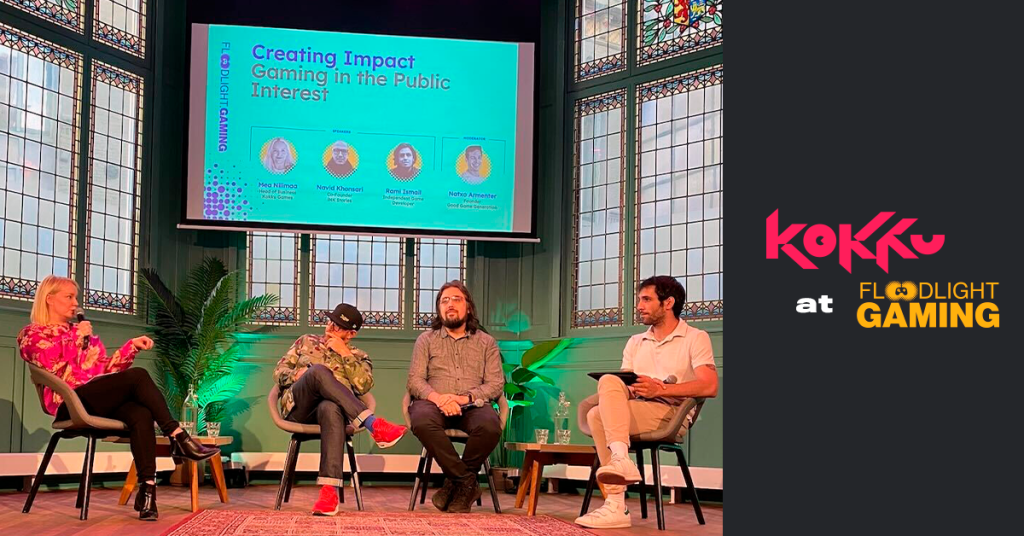Our Head of Business Development reflects on how strategy and collaboration give bold ideas the power to resonate worldwide.
At Kokku, we believe innovation often begins with bold, unconventional ideas. And sometimes, the most powerful of these ideas emerge not from billion-dollar studios, but from small teams with a passion for telling stories that matter.
That spirit was at the heart of the Floodlight Project’s Investigative Journalism Gaming Summit in Amsterdam, where our Head of Business Development, Mea Nilimaa, joined industry peers to explore how games can serve the public interest, and how creative prototypes can evolve into sustainable productions with global reach.
Games as a tool for change
The panel, featuring Navid Khonsari (Ink Stories), Rami Ismail (independent developer), and moderated by Nasho Armenter (Good Game Generation), reflected on the role of narrative-driven projects in shaping conversations beyond entertainment.
Titles like NORCO (a BAFTA winner blending personal storytelling with systemic critique) prove that games addressing complex themes aren’t just possible: they can succeed both critically and commercially. They remind us that interactive media has the unique power to engage players not only emotionally, but intellectually and socially.
Prototypes with purpose
One highlight was the jam-winning prototype Hunting the Hunter, developed in just three weeks and awarded €5,000. In the game, players step into the shoes of a journalist infiltrating a cocoa-smuggling network. Despite its simplicity, the prototype captured the potential of investigative storytelling in a way that traditional formats rarely can.
It’s a clear example of how experimentation, even on a small scale, can open pathways to experiences with real cultural and social impact.
The business perspective
From Kokku’s side, Mea brought to the table a fundamental point: creativity needs bridges to sustainability.
- Prototypes need pathways to become full productions.
A great idea can capture attention in a game jam or demo, but without clear structures for funding, production, and team scaling, it risks staying in the drawer. Building that bridge early means innovative stories can evolve into polished experiences ready for release. - Unique projects must be matched with the right publishers and partners.
Not every publisher is looking for the same type of content. The key is to identify those who value bold narratives and are open to projects that push boundaries. Strategic matchmaking ensures that creative visions find the support they need to grow sustainably. - Audience and positioning should be identified from the very beginning.
Knowing who the game is for shapes design decisions, communication strategies, and even funding opportunities. When positioning is clear from the start, projects have a much stronger chance of standing out in a competitive market and connecting with players on a deeper level.
These aren’t just “business considerations”, they are what allows bold ideas to leave the prototype stage and reach the hands of players worldwide. Without them, too many innovative concepts risk being left on the cutting-room floor.
Where creativity meets strategy
The summit made one thing clear: the potential of games to serve the public interest is enormous. But potential alone is not enough. It takes both visionary creativity and strategic business frameworks to ensure that ideas grow into products capable of resonating with players and making an impact on a global scale.
These conversations showed that innovation in gaming doesn’t happen in isolation. It thrives when creators, publishers, and communities work side by side to turn prototypes into experiences that players connect with on a deeper level. At Kokku, we’re proud to be part of that bridge.
